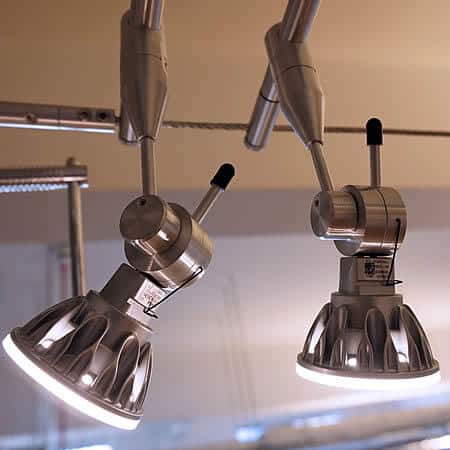CREATIVE ILLUMINATION
Creative Lighting Design & Architectural Lighting Design
Architectural lighting design can make or break the spaces we work, rest, shop, or play in. For these reasons, getting the building’s lighting design right the first time is key. Good creative lighting design can create splendour, define, accentuate, and enhance its environment on many levels. If you get it wrong, the opposite is true. Consequently, people and their organisations will feel the ripple effects.
We have all experienced the effects of working on a computer or entering a supermarket, exhibition, or retail space. After a short while, you’re not sure why, but you start to develop a headache or do not quite feel yourself.
This is partly due to an overly bright space using too many halogen spots or lighting fixtures. Consequently, this creates twinkling spots that your eyes have to deal with. These halogen lamps are great for making merchandise sparkle. However, they can also have the opposite effect on well-being. It can potentially cause headaches when overused, and it also uses immense amounts of valuable energy. Lighting solutions should embrace a sense of balance, including aesthetics, purpose, flexibility, and energy proficiency, to deliver a positive mood or well-being characteristic.
When you enter an architectural, retail, office, or commercial space, there should be an element of “I am not sure why, but I enjoy being here.” I know that it is not just the lighting. It is a recipe for so many things. For example, inspiring architecture, good ventilation, acoustics, and surfaces, to name but a few. However, it must be done at all costs, including for the well-being factor of a balanced lighting design.

Good Lighting Design – The Well-being Factor
As an independent lighting designer, I am conscious of building this well-being factor in every lighting project I undertake. Whether it’s an architectural, retail, commercial, or museum project, we aim to provide lighting solutions that meet the highest quality and safety standards and optimise comfort and aesthetic beauty.
Creating lighting solutions that promote well-being can be challenging, but it’s noteworthy to understand the technical aspects and how to implement them. In addition, achieving this goal can often be difficult, given the pressure to balance other project requirements and stay within budget.
However, making transparent and informed choices from the beginning of a creative lighting design project would be best. For example, positioning light fittings in the optimal location for eye comfort and using anti-glare reflectors can significantly reduce the number of twinkling stars visitors experience. Designing lighting that enhances environments requires a complex formula of flexibility, aesthetic perception, and technological interpretation. I am constantly thinking about how light affects how we connect with a space and feel within it. The impact of good lighting is often underestimated, and I am always mindful of the balance and synergy light can bring to a space.

We take a detailed approach to every project to achieve these objectives, starting with a thorough understanding of the space and its intended use. We analyse the lighting requirements and the impact of light on the users and the environment. We then create a lighting plan that considers all of these factors. The team works with architects, engineers, and other professionals to seamlessly integrate the lighting into the project. From the design phase to installation.
In a nutshell, designing lighting solutions that promote well-being requires a deep understanding of the technical aspects of lighting design, a keen eye for aesthetics and a sensitivity to the needs of the users and the environment. I believe that achieving this balance is crucial to creating lighting solutions that meet the highest standards of quality and safety and enhance the well-being of individuals.
If all lighting design consultants embraced well-being lighting design and made clients buy into it, we would require fewer headache pills. Furthermore, as a society, we would have far fewer tired eyes!





